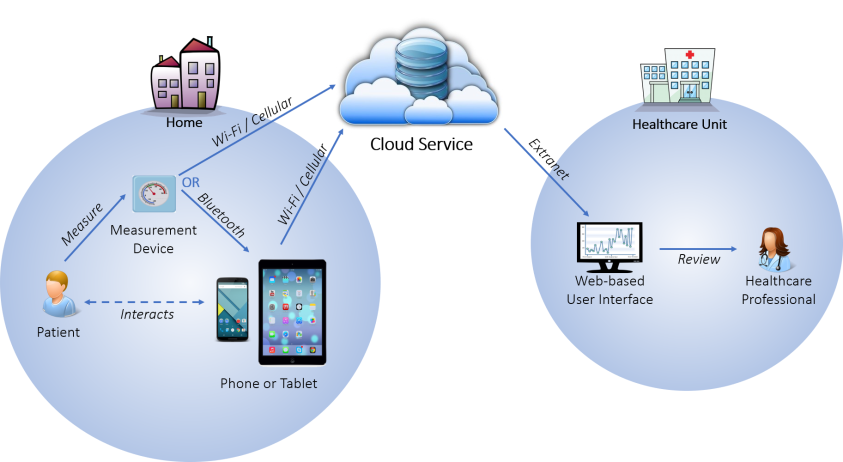Remote patient monitoring or RPM devices use digital tools to synchronize and transfer patient physiological data to telehealth nurses or technicians who consistently observe the information for at-risk patients. A cellular or Bluetooth connection is used to transfer the data from RPM devices.
Overview of RPMs
Small portable devices which are smaller than the size of a wearable watch are connected to monitors using either cellular or Bluetooth connection. Remote patient monitoring companies manufacture small devices that aid patients in areas that have fewer or no medical facilities. It helps patients access quality care without traveling far in search of a healthcare facility. Various devices measure health parameters related to blood pressure, heart rate, blood oxygen, body weight, glucose, and other vital signs. After checking the data sourced from these devices concerned clinicians will make necessary changes in the treatment plan if required.
RPM vs Telehealth
Remote devices are part of telehealth. However, the former has a larger canopy that starts and extends beyond the facility complex of a healthcare organization. RPM devices are used to monitor patients who are outside the vicinity of the hospital. Whereas telehealth is used for long-distance clinical consultations with help of communication technology and data transfer mechanisms. It is inclusive of telephones, virtual video calling systems, RPMs, and other distant communication such as emails.
Selecting the appropriate RPM device for a programs
Many healthcare facilities are leveraging technology to gain from the advantages that aid in cost reduction. Rising healthcare costs are persisting problems that need to be countered from all angles by adapting to all possible means that aid in quality and safe patient care without incurring high expenses. Effective utilization of the devices for the RPM programs in a healthcare facility depends on the durability and adequacy of the unit. With numerous entities that are manufacturing various RPM devices choosing the appropriate fit is a challenging task. Here are a few elements that will help clinicians and technicians select the right fit from a sea of vendors selling similar products for remote patient monitoring.
Connectivity options
Two connectivity options connect a remote device to the monitor from where the data is transmitted electronically to the office of telehealth or the clinician’s office. These options are either cellular or Bluetooth. Both carry a set of advantages and disadvantages. Cellular connectivity is established wherever there is network coverage.
A person does not need to be tech-savvy to operate a cellular-connected RPM and is perfect for older patients who find it difficult to maneuver over a Bluetooth device. Contrarily Bluetooth is not dependent on a cellular network and can work fine even in areas where there is a network downtime or outage.
One more advantage of cellular connectivity is two-way connectivity between the patient and the provider, a feature that is absent in Bluetooth devices. Considering these pros and cons between the options, it is practical to choose cellular options for the patient population which has more seniors and old aged persons who feel comfortable with easy-to-operate devices. If Bluetooth familiarization is not a barrier, then it is advisable to choose Bluetooth-enabled RPM devices
Patient engagement
Some RPM vendors just sell the device, and their responsibility ceases beyond the secure working of the device. Others will provide the clinical and nursing staff with hands-on training to connect and use the system properly.
Patient adherence and engagement increase only when the clinical point of reference as the concerned nurse practitioner or clinicians can introduce RPM devices and set the right expectations at the onboarding stages. But a healthcare provider can impart the right guidance to their patient only when they have received the training from the vendor.
Easy interfaces
The RPM system has to be easy to understand and use by the hospital staff for tracking patient alerts. The automation tools can be effective only when they match and integrate with the EHR, and the data compilation facilitates the requirements for CPT codes.
Conclusion
Selecting an RPM device is a price-sensitive decision and needs to address the ease of operations concerning patient engagement. This will involve learning all the workflows by your team and requires training and support from the vendors’ side.
































































